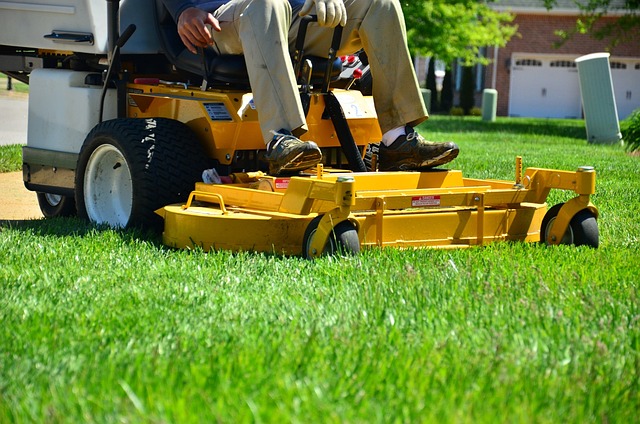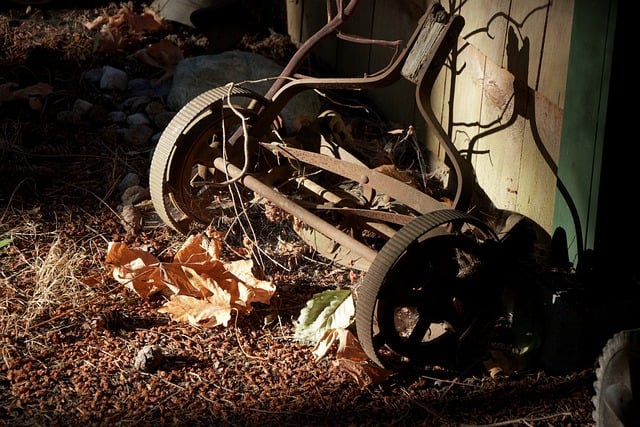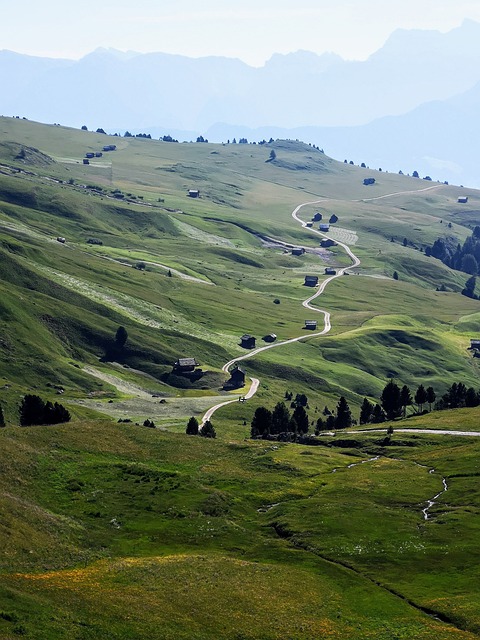Selecting patio and walkway materials for lawn care and landscaping involves considering climate, budget, and personal style. Natural stones like flagstone, slate, and granite offer timeless elegance and durability but may be pricier. Composite options such as concrete pavers and rubber tiles provide versatility, eco-friendliness, and better traction, while wood decks add warmth at a higher maintenance cost. Aligning material choices with local climate conditions and desired design ensures outdoor spaces are both functional and aesthetically pleasing in lawn care and landscaping.
Transform your outdoor space with a beautifully designed patio and walkway. This comprehensive guide explores all aspects of lawn care and landscaping, from choosing the right materials like concrete, stone, pavers, or wood – each with unique benefits and drawbacks – to designing functional and visually appealing layouts. We’ll walk you through the installation process, best practices for groundwork preparation, and essential maintenance tips to ensure your new outdoor spaces thrive.
- Choosing the Right Materials for Your Patio and Walkway
- – Factors to consider when selecting patio and walkway materials
- – Types of common materials (concrete, stone, pavers, wood) and their benefits/drawbacks
Choosing the Right Materials for Your Patio and Walkway

When it comes to patio and walkway installation, selecting the appropriate materials is a key decision that impacts both the aesthetics and durability of your outdoor spaces. In the realm of lawn care and landscaping, natural stones like flagstone, slate, and granite offer a timeless and elegant look. These options are highly durable, easily maintainable, and can enhance the overall value of your property. Flagstone, with its unique patterns and textures, provides a rustic charm, while slate exudes a sophisticated, modern aesthetic. Granite, renowned for its strength and low maintenance, is a popular choice for both functional and decorative walkways.
On the other hand, composite materials such as concrete pavers and rubber tiles are also viable choices. Concrete pavers, often used in combination with various finishes and textures, offer versatility and can be tailored to match your preferred style. Rubber tiles are an eco-friendly option, providing excellent traction and cushioning, which is particularly beneficial for areas prone to heavy foot traffic or where children play. Consider the climate, budget, and personal preferences when making a selection, ensuring that the chosen materials align with the overall lawn care and landscaping vision for your outdoor oasis.
– Factors to consider when selecting patio and walkway materials

When it comes to patio and walkway installation, choosing the right materials is a key decision that can impact both functionality and aesthetics in your lawn care and landscaping efforts. Several factors should guide your selection process. First, consider the climate and environmental conditions in your area. Different materials have varying levels of resistance to harsh weather, including freezing temperatures, heavy rainfall, or prolonged sunlight exposure. For example, natural stone is durable but may require sealing to withstand high moisture levels, while composite decking offers better fade and crack resistance but might not be as naturally heat-resistant.
Another important factor is the desired style and design that aligns with your landscaping vision. Patios and walkways come in a wide array of materials, colors, and textures, each offering unique visual appeal. Natural stones like flagstone or slate provide an elegant, organic look, while concrete pavers offer versatility and can be customized with various patterns and finishes. Wood decks add warmth and charm but require regular maintenance, whereas gravel paths are cost-effective, easy to install, and perfect for natural, rustic settings. Incorporating these considerations will ensure your patio and walkway not only enhance the beauty of your outdoor space but also stand the test of time in your lawn care and landscaping endeavors.
– Types of common materials (concrete, stone, pavers, wood) and their benefits/drawbacks

When it comes to patio and walkway installation, choosing the right materials is key for a stunning and functional outdoor space. Concrete offers durability and versatility, making it a popular choice for both patios and walkways. It’s low-maintenance and cost-effective but can lack aesthetic appeal compared to other options.
Stone, whether natural or manufactured, adds a touch of elegance and natural beauty to any lawn care and landscaping design. Its variability in texture and color allows for creative designs. However, stone can be more expensive and requires occasional sealing to maintain its appearance. Pavers provide a cost-effective solution with numerous design possibilities, offering both aesthetic flexibility and ease of installation. Yet, they may not be as durable as concrete or stone and need regular cleaning and maintenance to prevent damage from stains and weather conditions. Wood offers a warm, natural look but requires regular treatment to withstand the elements, making it a high-maintenance option compared to its counterparts.
When it comes to enhancing your outdoor space through patio and walkway installation, the right materials can make all the difference. By considering factors like durability, aesthetics, and budget, you can choose among various options such as concrete, stone, pavers, or wood. Each material offers unique benefits and drawbacks, catering to different preferences and lawn care needs. Incorporating a well-designed patio and walkway into your landscaping not only adds beauty but also increases the functionality of your outdoor area. Whether it’s for relaxing or entertaining guests, the right choice can transform your backyard into a vibrant and inviting space.














